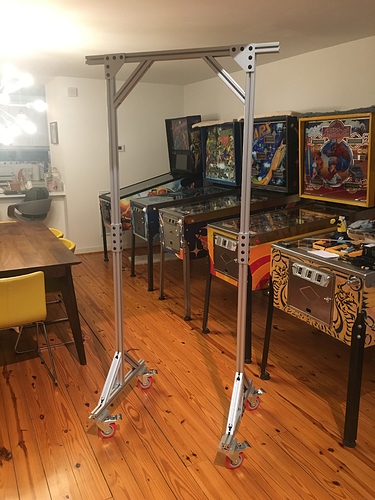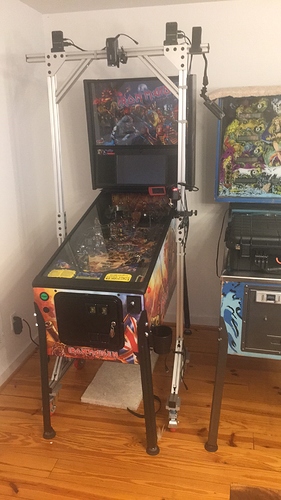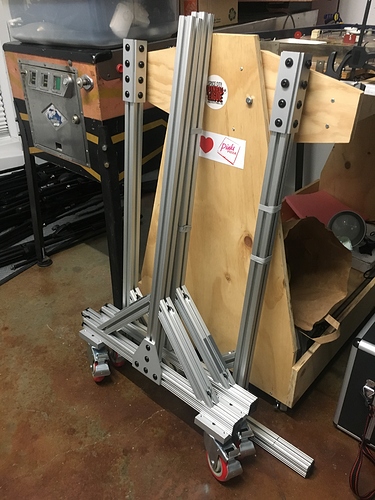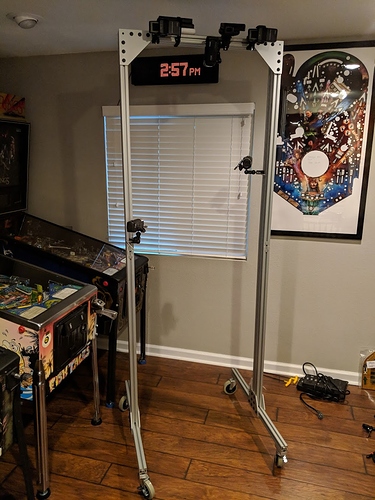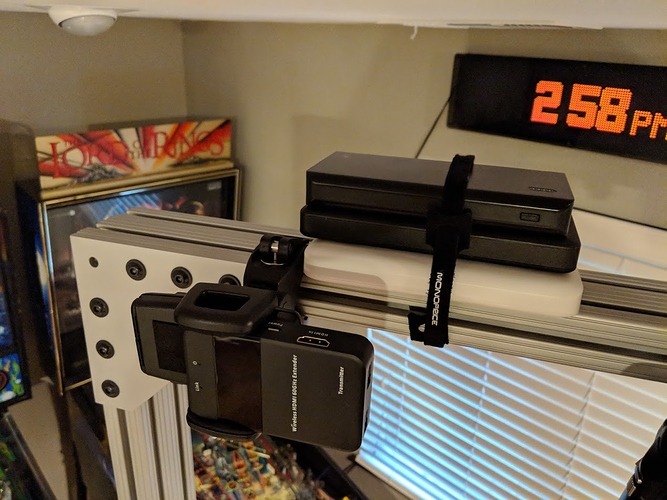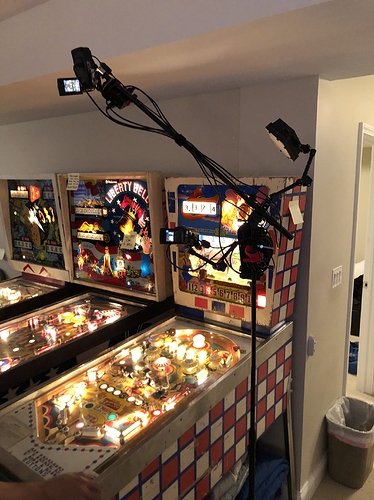I recently built a mobile camera rig for tournament streaming, and used it for the first time recently at the Space City Open. Since them, I’ve had quite a few people contact me about it wanting to build something similar. Since there is apparently demand, I figured I would post the materials and details here. This post focuses on just the rig itself, but if you have questions about the camera gear I’m happy to help.
Here’s what the rig looks like without any camera gear.
Here it is with camera gear, over a machine:
The biggest advantage of the rig is that you can use it to easily film a large number of games without having to put a separate camera over every game, run cables, etc. The rig was designed so that it can easily squeeze between machines that are very close together. It can be widened to fit super wide bodies (e.g., paragon), and can be broken down to fit in your car.
You can see how easy it is to move between games here: https://www.youtube.com/watch?v=J7T0_Wl-ir0&feature=youtu.be&t=11291. Game change starts at 3:08:11:
The entire rig is made from aluminum extrusion, ordered from 8020.net. Credit to @kdeangelo here. I was originally planning on having the rig fabricated locally, but Karl happened to be building a similar rig and pointed me to 8020. This is a way more cost effective and lighter than steel, which would have been something like $600.
The bill of materials is here. The total cost is about $340. Shipping was $32 to Texas. Note that I used 1515-Lite aluminum. You can save money and make it lighter by using ultra-lite. If i had a do over, I would have gone with the smooth version, purely for aesthetic reasons. Also note that I did not include the wheels in the bill of materials. Do not order the wheels from 8020 unless you don’t care about throwing away your money, as they are ridiculously over priced. Go to home depot or order on amazon for a fraction of the price.
This design works fine–you can just order all those parts and be good to go. However, if you like to engineer things, I’d encourage you to try and improve on it. Take some time to learn about 8020. They offer a wide variety of options for how to build something similar. For example, I’m not sure how necessary the 45 degree supports are. You could probably just use bigger plates at the joins and counterbores. My original thinking was that they would help prevent buckling at the bottom. Maybe they do, but I haven’t tested it without them. @kdeangelo built a similar rig without them, but also used bigger plates and 3" wide aluminum.
A word of caution on ordering from 8020 – shipping times can be very long. Longer than you’re used to with most online orders. The time will increase if you add any special cuts or counter bores. The nice thing about this design is that it only requires a few straight cuts. My order shipped less than 2 weeks after I ordered. Karl’s design used counter bores and took maybe twice that long.
For me personally, this is a game changer for tournament streaming. I streamed a few tournaments using 20+ c920 cameras, running cables, calibrating each one…it was an absolute nightmare. This makes life sooooo simple. With this rig, I can easily set up everything I need to stream the entire event in less than one hour. I hope to start streaming a lot more of our local events now.
